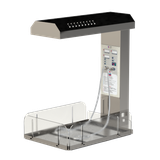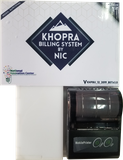Blindsport Detection Details
We,at the National Innovation Center, are currently researching the possible way to reduce Trippers/Trucks accidents through assisted blind spot detection techniques and solve the Overspeed issue in public buses using vehicle tracker systems. During our initial research, we came to know that blind spot comprises a major role in the accidents caused by heavy vehicles such as Trippers and Trucks. Such a heavy vehicle has a driver seat position at a significant height that’s why it’s difficult for drivers to see low-riding vehicles that are driving immediately in front of them or next to them. Using Computer Vision for scenario detection we can possibly overcome the problem of blind spots for which we are currently developing a system to solve such problems and save people’s lives.
Story
Road Traffic Accidents (RTAs) have been increasing in an upward trajectory since the early 2000s. As per the data given by world bank (2020) 2541 road deaths were officially reported in Nepal in the year 2017-18 in the same year 4,144 were injured. Cyclist, motorcyclist and pedestrian fall under the Vulnerable road user. Among the accidents Vulnerable road users comprise about 70 percent. That means every day 7 people lose their life due to accidents and the majority of them are Vulnerable Road Users (VRUs). This data only accounts for the loss of life but the economic burden due to such accidents is enormous. Amrit Banstola et. al conducted a research to estimate the total cost of RTAs in Nepal which they estimated to be around $122.88 million in 2017. This is a hefty loss due to road traffic accidents for a country below the poverty line where loss comprises 1.52% of GNP as of 2017. It is obvious that we cannot work on solving the entire RTAs at once. The best approach to solve such accidents is to break down the problem based on vehicles and solve them accordingly. As world bank states, for Nepal, there are five pillars to improve which are Road Safety Management, Safer roads and mobility, safer vehicle, safer road user and post-crash response. We can’t even work on the entire pillars through one common solution. What we can do is that we can work on a particular vehicle and work on solving the problems that caused the majority of the accidents, ensuring to cover as many of the safety pillars described by the world bank as we can. As per that we are trying to solve the problem of Heavy Good Vehicle (HGV) and VRU related accidents.
Objectives
More than 4000 tippers operate every day in and around Kathmandu valley most of them run in the Bhaktapur-Kavre road supplying the construction materials from Sunkoshi to Kathmandu valley and surrounding districts. Banning vehicles is obviously making it hard to tipper and truck entrepreneurs economically and it is increasing health risk to HGV drivers as they have to operate in off-hours. The economy of this entire business is not exact but it was estimated that around a total of $250,000 a day was being lost daily when the government stopped the vehicle to ferry construction materials as crusher industries failed to meet the standards in 2014. Though this doesn’t exactly show how much do the HGV entrepreneurs lose due to the office hour ban, we can assume some fraction of the construction industry is totally affected. Providing the solution to HGV entrepreneurs in reducing accidents might help them to lobby traffic police to allow them to operate during off hours too. Though we cannot pinpoint exactly how big the market is for blind spot detection systems, research information and technology used in this project can be used in the Advanced Driver Assistance System which itself is a booming industry having huge potential not only in Nepal but also in South Asian Countries.
Key Features
There has always been discussions about the deaths and severity caused by the accidents of Heavy Good Vehicle like Tippers and Vulnerable Road Users like Bikers. Research has been done regarding the frequency of the accidents but there has been none on what actually causes the accidents. We are basing our study at the research done on European countries and the problem of Blind spot on HGVs has been raised and rules are made accordingly. Through there's a risk of the pattern not being same on our country but the frequency and type of accidents suggests the problem might be related to vision. We would be first in our country to point out the cause of the accident and design and develop a product to mitigate the cause.
Key Features
There have always been discussions about the deaths and severity caused by the accidents of Heavy Good Vehicle like Tippers and Vulnerable Road Users like Bikers. Research has been done regarding the frequency of the accidents but there has been none on what actually causes the accidents. We are basing our study on the research done on European countries and the problem of Blindspot on HGVs has been raised and rules are made accordingly. Though there's a risk of the pattern not being the same in our country but the frequency and type of accidents suggest the problem might be related to vision. We would be first in our country to point out the cause of the accident and design and develop a product to mitigate the cause.
In-Depth Specs
|
[{'type': 'text', 'value': 'There would be cameras focused to cover blindspot, a processing device, and a dashboard to detect and display the vehicles at the blind spot.', 'id': '17e5a804-8429-459b-bec4-e71f7e971651'}] |



